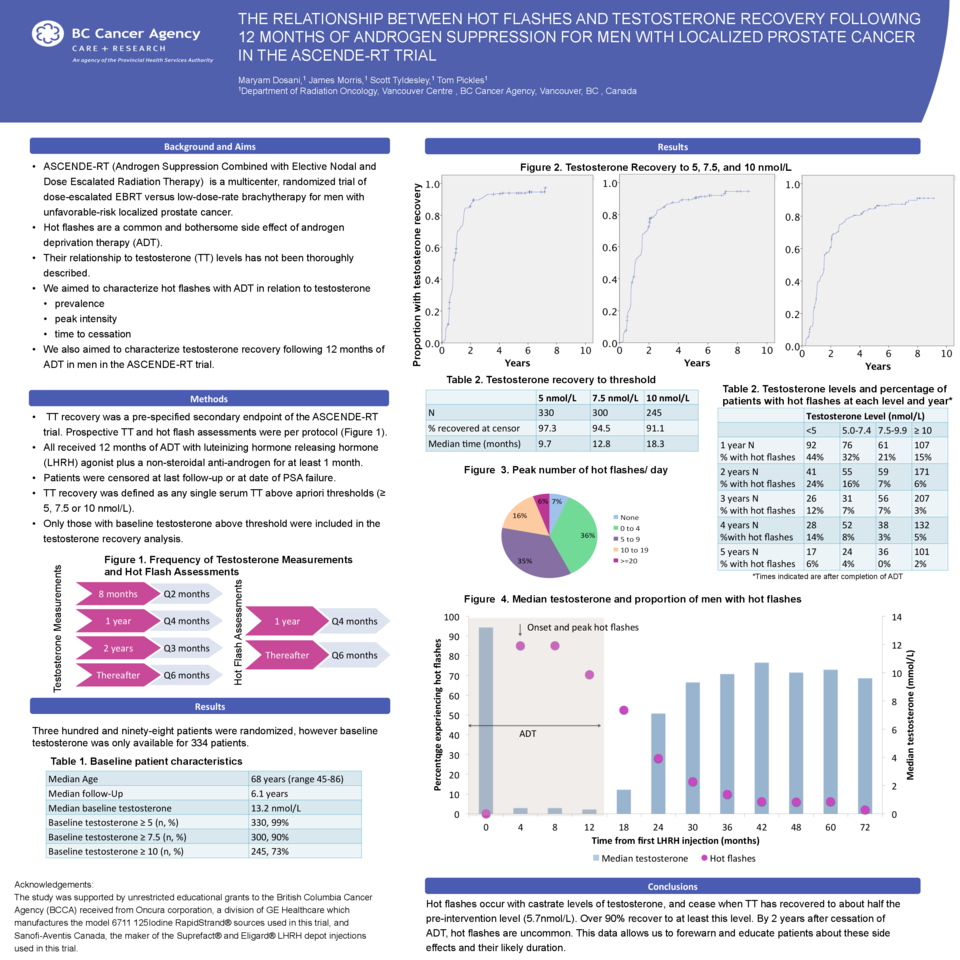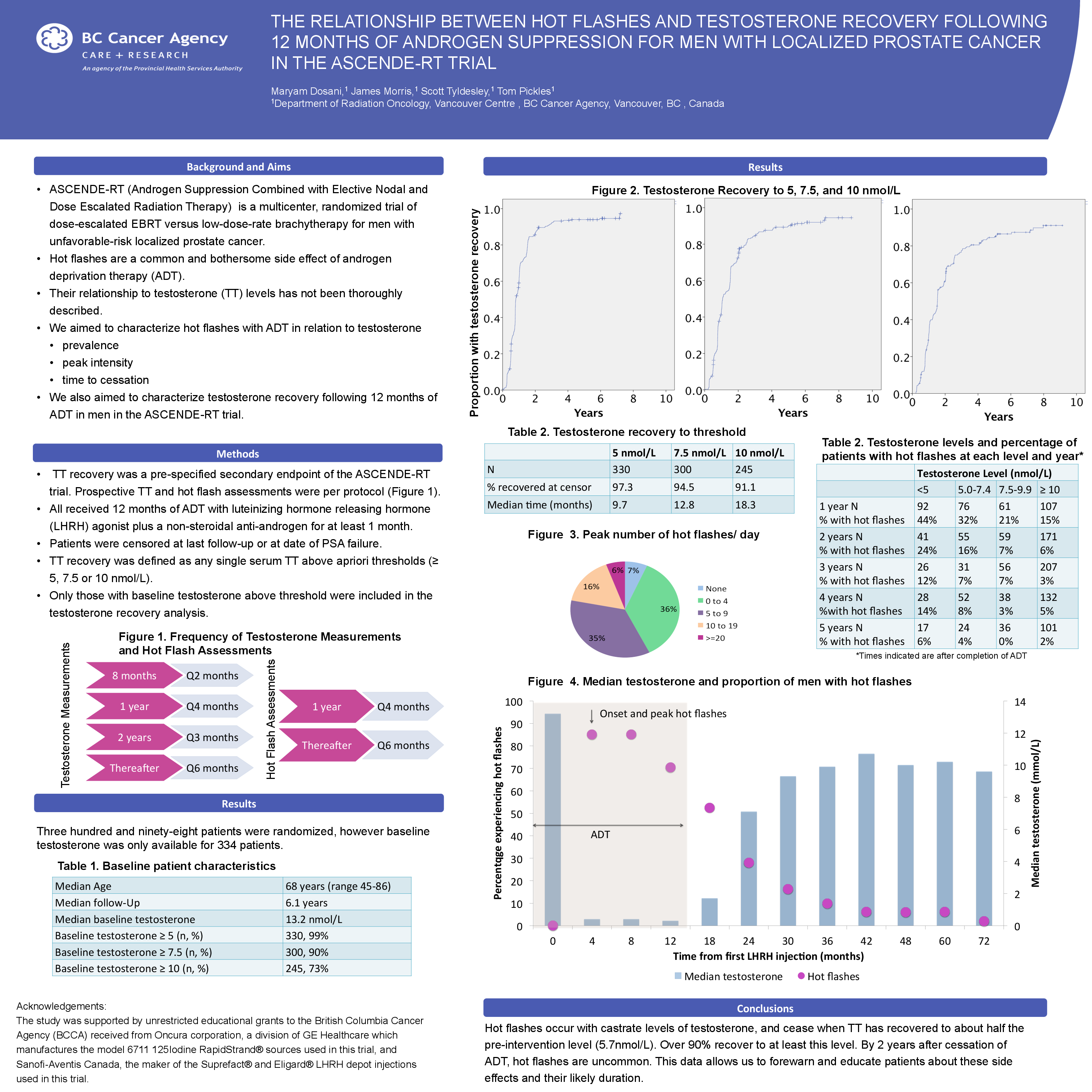Abstract
Purpose
This study was designed to characterize the proportion of men who experience hot flashes (flashes), their peak intensity and cessation in relation to testosterone (TT) levels, with androgen deprivation therapy (ADT). These relationships have not been described in the literature previously. We also characterize testosterone recovery following 12 months of ADT in men undergoing external beam radiation therapy (EBRT) (+/- brachytherapy boost).
Materials and methods
This is a pre-specified secondary analysis of the ASCENDE-RT clinical trial, which is a multicenter, randomized trial of dose-escalated EBRT versus low-dose-rate brachytherapy for men with unfavorable-risk localized prostate cancer. 398 men were randomized. All received 12 months of ADT with luteinizing hormone releasing hormone (LHRH) agonist plus a non-steroidal anti-androgen for at least 1 month. TT was measured every two months until 8 months, at one year, every 3 months until 24 months, every 6 months until 5 years, and yearly thereafter. Patients were censored at last follow-up or at date of PSA failure. TT recovery was defined as any single serum TT above threshold, as defined below. Presence and intensity of flashes were assessed every 4 months until 1 year, every 6 months until 5 years, and yearly thereafter.
Results
TT and hot flash data were available in 392 patients. Analysis was restricted to 334 patients in which baseline (pre ADT) TT was collected. Median age at first LHRH injection was 68 years (range 45-86). Median follow-up from date of ADT to last assessment of flashes was 6.1 years.
Median TT at baseline was 13.1 nmol/L. All patients with baseline TT ≥ 5 (91% of study cohort) recovered TT to this threshold with a median time to recovery of 9.6 months. 87% of patients with baseline TT ≥ 7.5 (84% of study cohort) recovered TT to this threshold after a median of 12.7 months. 81% of patients with baseline TT ≥ 10 (68% of study cohort), recovered TT to this threshold after a median time of 18.2 months.
94% of men experienced flashes at some point. Flashes were first reported at a median of 4.0 months from first LHRH injection, when the TT had fallen to castrate. Peak intensity of flashes also occurred at this time and TT level. Median time of cessation of flashes was 7.6 months following cessation of ADT, when median TT had risen to 5.7 nmol/L. 91% of patients recover TT to at least this level within a median 10.9 months. At last follow-up, 99.7% of men had cessation of flashes.
Conclusion
Hot flashes occur with castrate levels of testosterone, and cease when TT has recovered to about half the pre-intervention level (5.7nmol/L). Over 90% recover to at least this level.






